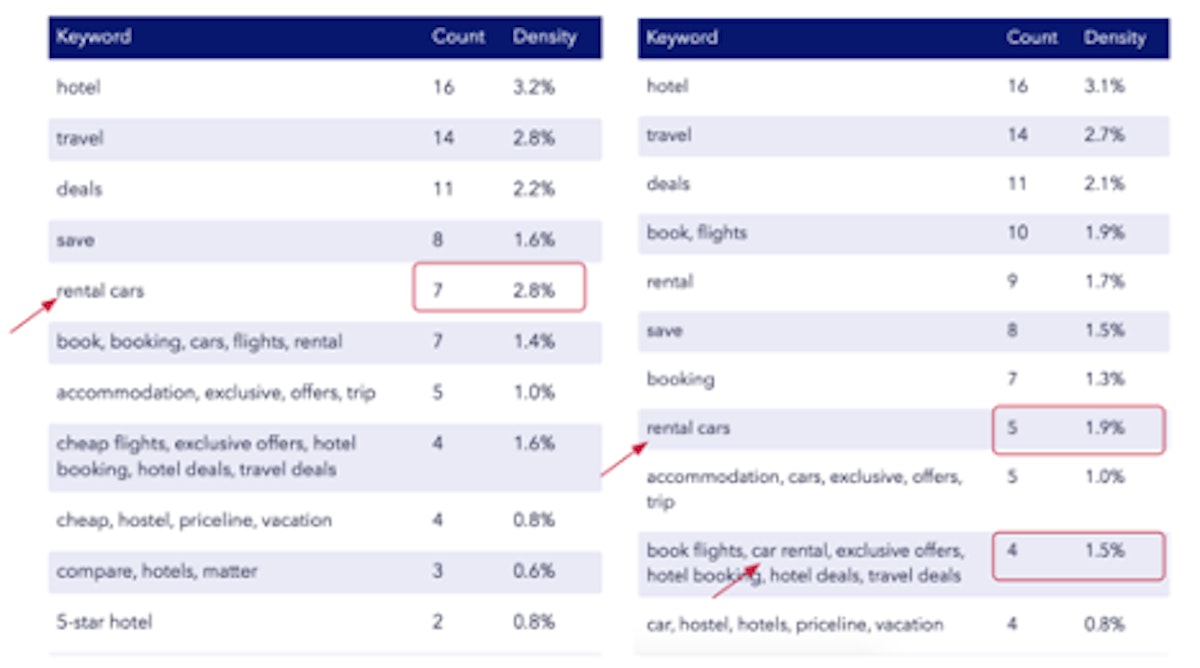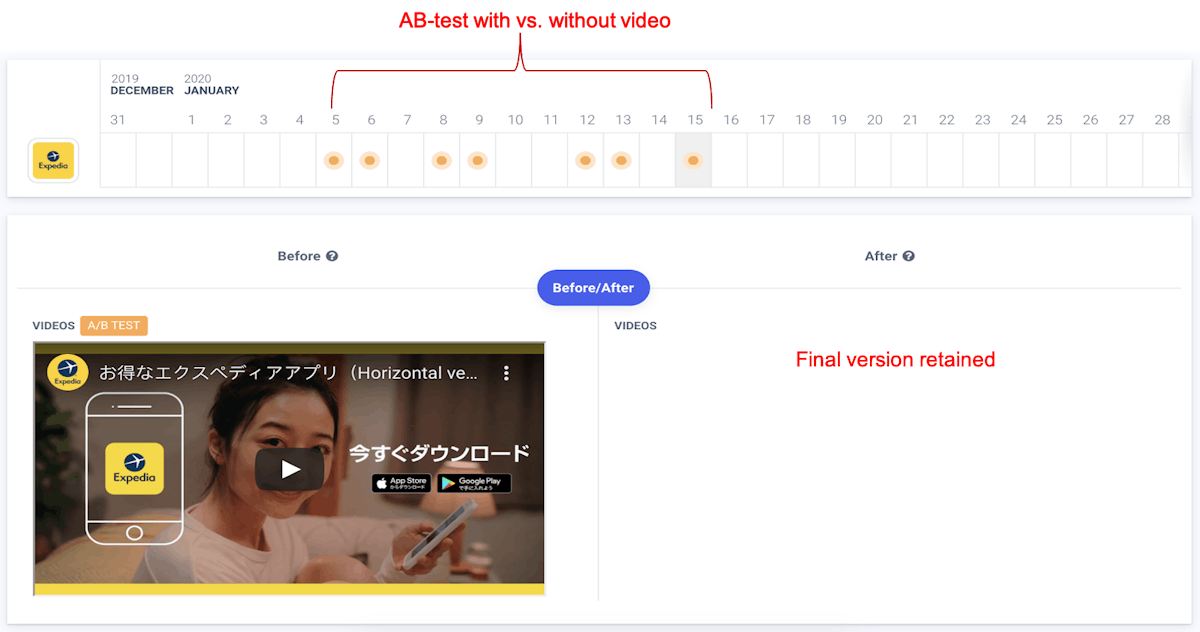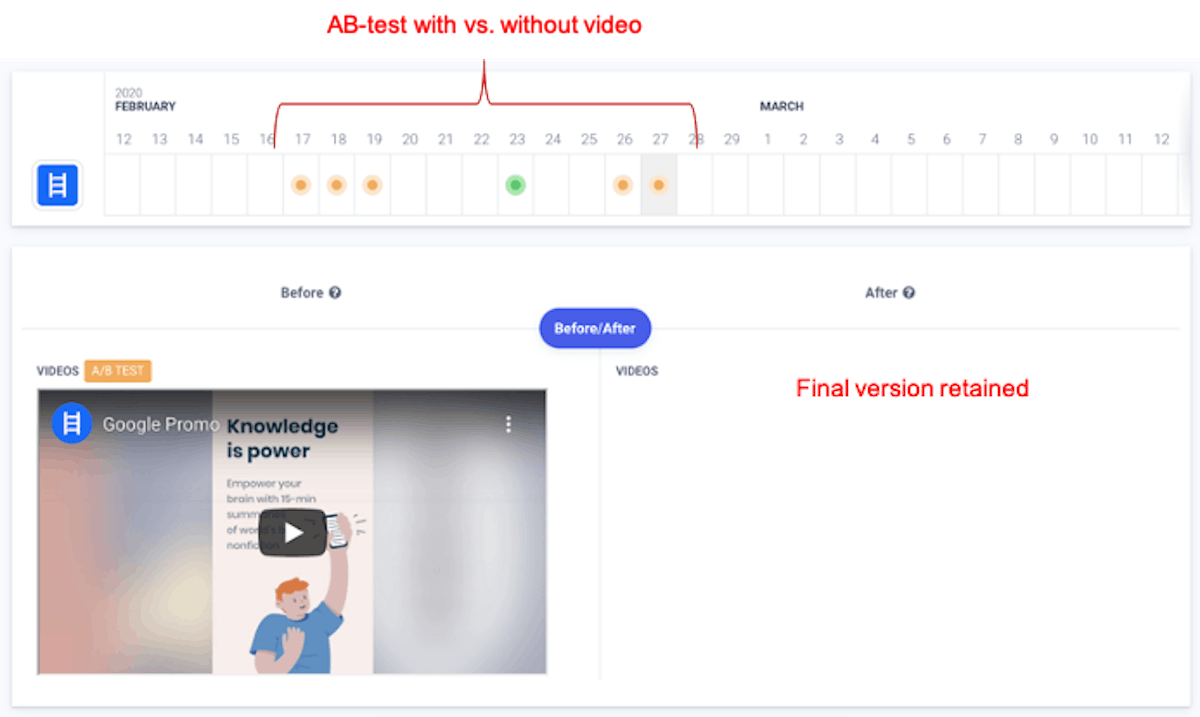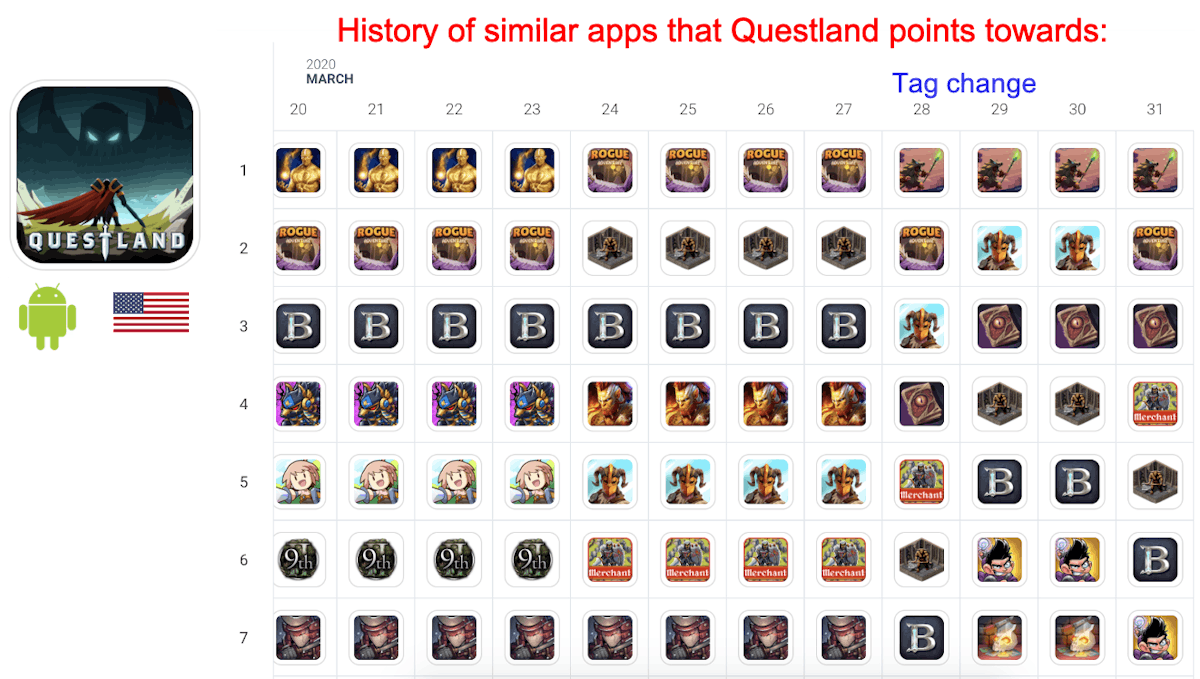
ASO on Google Play: 5 Learnings from Case Studies
At the recent App Promotion Summit, London, which took place virtually due to Covid-19, AppTweak’s Chief Product Officer Marie-Laure Cruyt presented practical examples and case studies to demystify ASO on Google Play. To see the full talk, use this link or continue to read below to unearth the 5 tips to build a successful ASO strategy on Google Play.
1. Keyword density has an impact on app rankings
It is recommended that the long description consist of high-priority keywords with the most important having the highest density of around 3%. Having a higher density than 3% should be avoided, as it can be considered keyword stuffing.
Check out this free density checker tool
On January 26, 2020, Priceline made an update to their long description on their US app, slightly decreasing the density of “rental cars” and “cars,” while increasing the density of “car rentals” and “car.”

To assess if this had an impact on the visibility of Priceline for these keywords, we built a keyword list on AppTweak consisting of 30 keywords with “car rental” or “rental cars,” and used the Keyword Monitoring tool for a visual of Priceline’s visibility.

We can see there was a large jump in visibility for Priceline immediately following this update, suggesting that Priceline improved in rankings for many keywords in this list or the keywords with the highest volume. When looking at the specific keyword movements, we can see that the only keywords to lose visibility were those that were reduced in the long description.

This demonstrates that keyword density does have an impact on an app’s keyword rankings. It is important to remember that it is impossible to have a high density for many keywords, so it must be done strategically. Make sure to focus on the highest priority, but understand it can take a few tries to get it right. If Google doesn’t pick your app to rank high on a keyword, try making an update that focuses on a slightly less competitive option, measure the results, and keep trying until you find high-performing keywords.
2. Optimize app screenshots to show value
Keywords are not the only way to share the right messaging on Google Play. Creatives must also align and reinforce the message of your app’s purpose.
When WedMeGood, an Indian wedding planning app, lost its number 1 app for “wedding planner” and “wedding planning” to an American app MyWed, they asked us how they could regain the number 1 position. As we just mentioned, a good place to start is looking at the keyword density for both apps.

Both apps are targeting the same keywords in their title and short description. WedMeGood also has a higher density for both “wedding planner” and “wedding planning.” Although it does help rankings, keyword density is not the only factor. There are many elements that can influence which apps rank better on the same keywords, including conversion and retention.
A major element that impacts conversion is an app’s screenshots. In the following example, both apps use a similar design, but there are still major differences in what each app is showcasing. MyWed highlights four key features in their screenshots: a wedding day countdown, task tracker, budget monitor, and guest list manager. These are four valuable features when searching for a wedding planner app.
Messaging on the screenshots for WedMeGood, on the other hand, is more general.


Highlighting in this manner can make a difference in terms of conversion, and this goes for any app. It is important to identify the features that potential users are most interested in, have clear messaging, and even test the order in which they appear.
While we are at it, here are a few reminders when selecting your screenshots for Google Play:
- Never include any content that reflects or suggests Google Play ranking, awards, performance, user testimonials, promotional information, or price. For example, do not use words like “New,” “Discount,” “Best,” “Top,” “#1,” “Sale,” or “Million Downloads.”
- Do not use any form of call-to-action, for instance, “Install now,” “Download now,” “Try now,” or “Play now.”
- Refrain from showing people interacting with the device (for instance, fingers tapping on the device), unless the app usage or core gameplay is off-device.
- Avoid using screenshots that are distorted, blurry, or pixelated. Neither go for ones that are stretched or compressed.
- Do not use image elements in your screenshots that maybe repetitive or inappropriate, such as third-party logos or characters without prior permission, device imagery, etc.
3. Don’t take video for granted
It’s commonly believed that video catches the user’s attention and increases conversion. However, this is not always the case. Videos can be distracting to users, or the video may not clearly project the right messaging. It’s important, as with all things in ASO, that you test if your video is actually improving conversion for your app. After conducting a small search, we found a few apps that A/B tested video versus those who had no video and decided on going with no video. We can assume that the video did not win the A/B test because conversion with it was lower or did not improve.
Here, we see that Expedia ran a short A/B test in January testing video versus no video, and used no video.

Same goes for the app Headway, which summarizes books for users in 15 minutes. They A/B tested video versus no video in February and also did not use a video.

These examples show that adding a video doesn’t consistently boost conversion. In 2020, in the US, we observed that among apps running A/B tests, half kept the video, and half removed it. Therefore, it’s essential to test what suits your app. Also, studying your competitors can provide valuable insights.
Learn more about AppTweak’s Metadata History feature
4. Retention is the most important factor
Recently, one of our AppTweak users noticed a significant boost in their keyword rankings and a notable rise in their category rankings. It was undoubtedly good news, but it left them curious about what caused this sudden improvement. Although they were actively engaged in ASO, they hadn’t made any recent updates prior to this spike.
Upon investigating, they uncovered an interesting discovery. It turned out that on a particular day, which we’ll refer to as “day D,” there was a high rate of users uninstalling and immediately reinstalling the app. The reason behind this unusual behavior was a bug. Surprisingly, these users were loyal and committed to the app. What made this even more fascinating was that the retention rate following day D skyrocketed to an impressive 95%. This contributed to the app’s surge in rankings for high-traffic and competitive keywords.

In the 30 days following this event, the app’s rankings on high-traffic keywords and prominent sports brands like Fancode, ESPN, and WWE saw an improvement. The app’s category ranking also displayed a positive trend. Before day D, it held around the 120th position in the Sports category. Over the next 30 days, with strong user retention, its category ranking soared to a peak position at number 7 before gradually tapering off.

Today, their Sports category rankings are back to normal, but they were surprised by the quick and significant impact on their rankings. They learned that user retention matters a lot to Google’s rankings. When selecting keywords, focus on those with good user retention because Google looks at retention for each keyword.
5. Impact of Google Play tags on Similar Apps
Lately, an AppTweak client updated one of their tags, and saw an immediate impact. The next day, the list of similar apps suggested by Google in the app page had changed.

When we look at the similar apps that refer to Questland, there was also an immediate impact.

Besides the tags you choose, you can’t control much. You can’t predict which apps will link to yours or others until after adding the tag. Nevertheless, it’s valuable to track these changes because they directly affect your app’s explore traffic. For instance, when we examine how these changes influenced views from similar apps, we see that Questland‘s views had increased, but this spike ceased after the tag change.

Tags have a direct influence on similar apps that point towards your app and the apps you point towards. Whether you make changes or not, it is important to monitor this extra source of visibility, as your competitors may update their tags
Find out which apps are referring to your app in the Similar Apps suggestions
Many factors play an important role in keyword rankings. Hopefully you are already tracking and measuring many of those. Perhaps, some or all of these 5 factors may not have been on your radar, but you can now consider these aspects when looking for new areas to improve conversion for your app.



 Simon Thillay
Simon Thillay

 Oriane Ineza
Oriane Ineza

 Micah Motta
Micah Motta